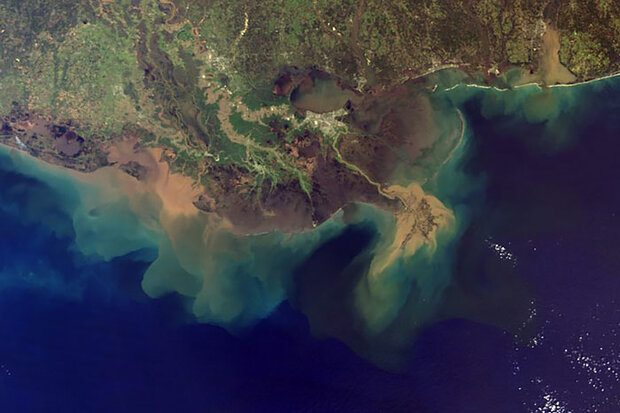NOAA scientists publish a new river chemistry and discharge dataset for U.S. rivers

A study has found that the Mississippi River plume played a key role in the intensification of Hurricane Michael in 2018. Credit: NASA MODIS

A study has found that the Mississippi River plume played a key role in the intensification of Hurricane Michael in 2018. Credit: NASA MODIS
A new river chemistry and discharge dataset for U.S. coasts has been released. A recent publication by scientists at NOAA’s Atlantic Oceanographic and Meteorological Laboratory (AOML), Northern Gulf Institute (NGI), and NOAA’s Geophysical Fluid Dynamics Laboratory (GFDL) provides a river chemistry and discharge dataset for 140 U.S. rivers along the West, East, and Gulf of Mexico coasts, based on historical records from the U.S. Geological Survey (USGS) and the U.S. Army Corps of Engineers. This dataset will be very useful for regional ocean biogeochemical modeling and carbon chemistry studies.
Ocean biogeochemistry models are widely used to simulate, forecast, and study marine ecosystems, ocean carbon chemistry, ocean acidification, ocean productivity, and fisheries. In recent years, there has been an increasing focus to better understand and quantify the influence of river inputs on U.S. coastal ecosystems. This is reflected by the growing number of ocean biogeochemical modeling studies that address river-induced ocean patterns. However, to properly simulate coastal ecosystem responses to river runoff, these models need realistic inputs of river-water properties such as nutrients, alkalinity, and dissolved inorganic carbon concentration.